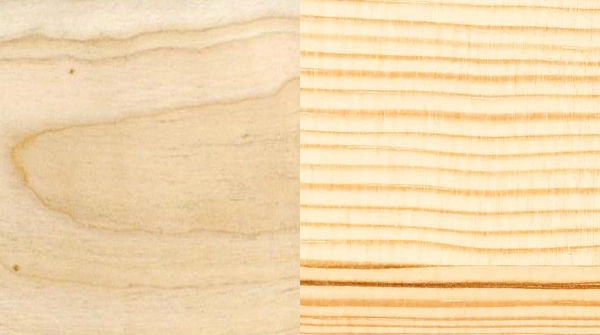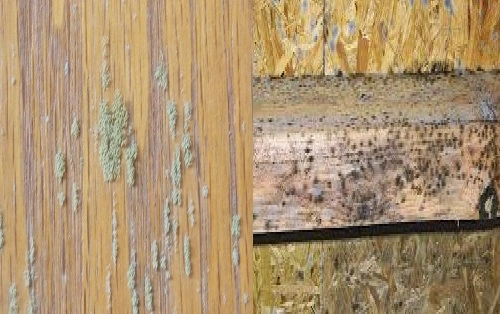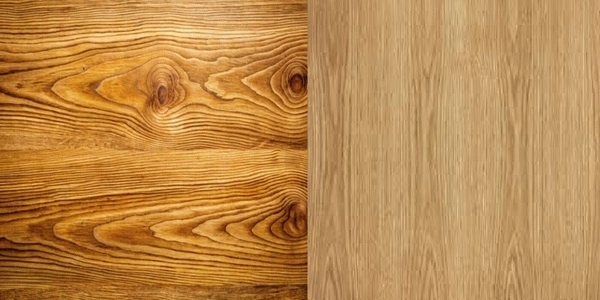When selecting wood for furniture, cabinetry, or DIY home improvement projects, poplar and pine are two popular choices. Both are softwoods, but they differ significantly in terms of appearance, durability, cost, and ease of use. Choosing between the two depends on your specific needs, budget, and desired aesthetic.
This article provides an in-depth comparison of poplar wood and pine wood, exploring their characteristics, advantages, disadvantages, and ideal applications.
What is Poplar Wood?
Poplar wood comes from deciduous trees, primarily from species like yellow poplar (tulip tree) and black poplar. Although technically a hardwood, it is one of the softest hardwoods available, often used for utility purposes and furniture where cost-effectiveness is essential.
Key Characteristics of Poplar Wood:
1. Appearance: Poplar has a light, creamy color with green, yellow, or brown streaks. It has a smooth texture and straight grain, making it ideal for painting and staining.
2. Workability: It’s easy to cut, sand, and finish, making it a favorite among woodworkers and DIY enthusiasts.
3. Durability: While not as strong as other hardwoods, poplar is moderately durable and suitable for indoor projects.
4. Cost: Poplar is an affordable hardwood, often priced similarly to or slightly higher than softwoods like pine.
What is Pine Wood?
Pine wood is a softwood derived from evergreen coniferous trees. There are many species of pine, such as eastern white pine, southern yellow pine, and sugar pine, each with unique properties. Pine is widely used in construction, furniture, and DIY projects due to its availability and versatility.
Key Characteristics of Pine Wood:
1. Appearance: Pine has a pale yellow to light brown color with visible knots and a prominent grain pattern. The rustic look of pine makes it popular for farmhouse-style furniture.
2. Workability: Pine is easy to cut, shape, and sand. It takes stains and paints well but may require conditioning to prevent blotching.
3. Durability: Pine is softer than poplar and more prone to dents and scratches, but some species like southern yellow pine are denser and more durable.
4. Cost: Pine is one of the most affordable woods, making it an excellent choice for budget-conscious projects.
Comparison of Poplar and Pine Wood
| Feature | Poplar Wood | Pine Wood |
|---|---|---|
| Hardness (Janka) | 540 (yellow poplar) | 380-870, depending on the species (e.g., eastern white pine: 380; southern yellow pine: 870) |
| Appearance | Light, smooth, with minimal knots | Rustic, with visible knots and prominent grain |
| Durability | More resistant to dents and scratches | Softer; prone to wear over time |
| Workability | Easy to cut, sand, and paint; holds details well | Easy to cut and sand; may require pre-staining treatment |
| Cost | Affordable hardwood | Very affordable, especially for larger projects |
| Weight | Lightweight to moderately heavy | Lightweight to medium, depending on species |
| Best For | Painted furniture, cabinets, moldings | Rustic furniture, construction, DIY projects |
| Resistance to Moisture | Low; best for indoor use | Low; can warp or swell if not sealed properly |
Advantages of Poplar Wood
1. Smooth Finish: The fine, uniform grain of poplar makes it ideal for painting and achieving a polished look. It’s often used in painted furniture and cabinetry.
2. Easy to Work With: Poplar is soft enough to cut and shape easily but hard enough to hold screws and nails securely.
3. Minimal Knots: Poplar has fewer knots than pine, providing a cleaner and more uniform appearance.
4. Affordable Hardwood: It’s one of the most budget-friendly hardwood options available.
Drawbacks of Poplar Wood:
1. Staining Challenges: Poplar absorbs stain unevenly, often requiring a conditioner to prevent blotching.
2. Indoor-Only Use: Poplar is not moisture-resistant and is best suited for indoor applications.
Advantages of Pine Wood
1. Rustic Appeal: Pine’s visible knots and grain patterns give it a rustic charm that’s perfect for farmhouse or traditional-style furniture.
2. Affordability: Pine is widely available and one of the most economical wood options for furniture and construction.
3. Lightweight: Pine is easy to transport and handle, making it ideal for DIY projects.
4. Versatile: Suitable for both structural and aesthetic applications, pine is used for everything from framing to decorative furniture.
Drawbacks of Pine Wood:
1. Softness: Pine is prone to dents, scratches, and wear, especially in high-traffic or heavy-use areas.
2. Knot Challenges: The knots in pine can cause uneven finishes and may bleed through paint or stain over time.
3. Moisture Sensitivity: Pine can warp or swell if exposed to moisture without proper sealing.
Best Uses for Poplar Wood
1. Painted Furniture: Poplar is ideal for painted pieces like cabinets, dressers, and tables, where a smooth finish is desired.
2. Moldings and Trim: Its smooth grain and ease of machining make it perfect for interior trim, moldings, and paneling.
3. Frames and Hidden Structures: Often used for drawer sides, frames, and other areas where appearance is less critical.
Best Uses for Pine Wood
1. Rustic Furniture: Pine’s natural knots and grain make it ideal for farmhouse-style furniture, such as dining tables and bed frames.
2. DIY Projects: Its affordability and ease of use make pine a popular choice for beginner woodworking projects.
3. Construction: Pine is commonly used for framing, flooring, and other structural applications.
Cost Comparison
1. Poplar Wood:
- Typically costs $3 to $6 per board foot, depending on quality and location. It is more expensive than pine but cheaper than many hardwoods.
2. Pine Wood:
- Costs around $2 to $4 per board foot for eastern white pine and slightly more for southern yellow pine. Its low cost makes it ideal for large-scale projects.
Which Should You Choose?
Your choice between poplar wood and pine wood will depend on the specific requirements of your project:
1. Choose Poplar If:
- You’re creating furniture or trim that will be painted or requires a smooth, uniform appearance.
- You need a moderately durable material for indoor use.
- A clean, modern look is more important than rustic charm.
2. Choose Pine If:
- You want a rustic aesthetic with visible knots and grain.
- You’re on a budget or working on a large-scale project.
- You’re building furniture, flooring, or framing that doesn’t require a high level of durability.
Conclusion
Both poplar wood and pine wood have unique advantages and are suitable for a wide range of applications. Poplar is the better choice for painted furniture and trim work, while pine excels in rustic furniture and cost-effective projects. By understanding their differences, you can select the best wood for your needs and create beautiful, functional pieces that enhance your home.


